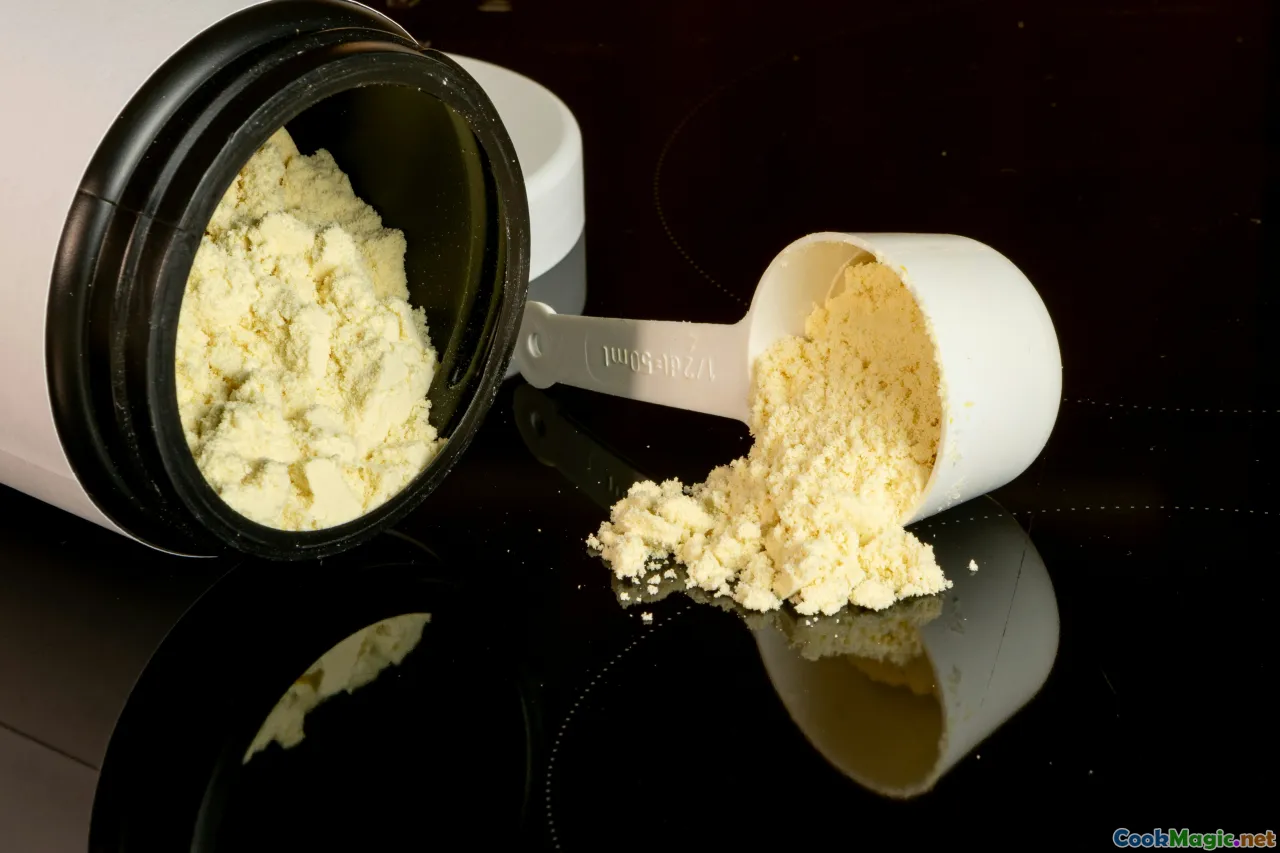Grass Fed Butter vs Regular Taste and Nutrition Facts
10 min read Explore the differences in taste and nutrition between grass-fed and regular butter to make informed culinary choices. July 11, 2025 06:05
Grass-Fed Butter vs Regular Butter: Taste and Nutrition Unveiled
Walking into a bustling farmers' market in Provence, the aroma of fresh dairies and pastureland fills the air—an ode to the age-old romance with butter. For centuries, butter has been a pivotal ingredient across cultures, from the flaky croissants of France to the hearty Irish stews, each with its quirks and traditions. Today, amidst the kaleidoscope of dairy options, two contenders stand out fiercely: grass-fed butter and regular (grain-fed) butter. While both are butter in form, their journey from pasture or feedlot to your plate profoundly influences their taste profiles and nutritional makeup.
In this explorative deep dive, we'll explore the sensory nuances, nutritional differences, cultural stories, and practical implications of choosing grass-fed versus regular butter. Whether you're a culinary enthusiasts eager to optimize flavor or health-conscious consumer seeking data-driven insights, this comprehensive guide aims to illuminate every corner of this butter debate.
The Journey from Pasture to Platter

Before diving into taste and nutrition, it's essential to understand the foundational difference: how the cows are fed. Grass-fed butter originates from cows that graze freely on pasturelands—fields lush with wild grasses, herbs, and local flora. These grazing patterns are often traditional and seasonal, influenced by the local landscape, climate, and farming practices.
In contrast, regular butter typically comes from cows that might be fed a diet heavy in grains—corn, soy, or stored feeds designed for higher milk yields. This shift in diet affects not only the production cost but the flavor profile and nutritional composition of the butter.
Cultural roots run deep here: French pastoral farmers take pride in their moveable pastures, celebrating the seasonal cycles of flora, while industrial dairies prioritize efficiency, sometimes at the expense of flavor nuance.
Sensory Spectrum: How Do They Taste & Smell?

When it comes to taste and aroma, grass-fed and regular butters present a startling divergence rooted in their diets.
Grass-Fed Butter: Earthy, Complex, Floral
The first thing you notice upon opening a block of grass-fed butter is its rich, golden hue—almost glowing, a visual testament to its vibrant, pasture-based diet. As you spread it, the flavor bursts forth with a complex tapestry.
Expect a pronounced earthiness—think meadow grasses, fresh-cut hay, and hints of cress or wild herbs—especially if the butter is harvested during spring or early summer. The aroma can carry subtle floral notes or a mild grassy sweetness, reminiscent of kissing a freshly mown field at dawn.
On your palate, it feels creamier and slightly more granular, with a lingering depth that brings to mind roasted nuts and peppered greens. Its textured richness complements artisan breads, homemade biscuits, and dishes that highlight subtle dairy flavors.
Regular (Grain-Fed) Butter: Mild, Creamy, Uniform
In contrast, regular butter offers a more neutral, mellow flavor profile—smooth, slightly sweet, with a less pronounced aromatic presence. Its homogeneity appeals to the mass market, where consistency is prized.
The aroma tends to be lightly dairy-sweet, akin to vanilla and softly toasted milk. The texture is velvety, often melting smoothly across your tongue. This butter shines in baking, where its neutrality allows other ingredients to dominate.
Nutritional Insights: The Hard Data Behind the Flavor

Moving beyond tastings, understanding the nutritional distinctions can guide health-aware choices.
Fatty Acid Profiles
Grass-fed butter typically boasts a higher concentration of beneficial fats—specifically, omega-3 fatty acids and conjugated linoleic acid (CLA). These fats are associated with anti-inflammatory properties, improved immune function, and even potential support in weight management.
A study published in the Journal of Dairy Science found that grass-fed butter can contain up to 60% more omega-3s compared to conventional butter.
Conversely, regular butter often contains higher omega-6 fatty acids, which, in excessive amounts, have been linked to inflammation and chronic disease. The 중요 here is balance, and the omega ratio (omega-3 to omega-6) favorably tilts in grass-fed dairy.
Vitamins & Antioxidants
Grass-fed butter is richer in fat-soluble vitamins—Vitamin A, E, and K2—which influence eye health, skin, and calcium metabolism. Additionally, the antioxidants—such as beta-carotene—impart its striking golden color and bolster immune health.
Regular butter still provides these nutrients but in lower concentrations, variably affected by the cow’s diet and processing methods.
Calorie & Macronutrient Content
Calorically, both types are similar due to their fat content. However, some sources suggest that grass-fed butter may have marginally less total calories due to its more natural digestibility and lower processing.
Cultural and Emotional Significance

Butter isn’t merely a culinary ingredient—it's a vessel of tradition and culture. For many Mediterranean and European cultures, grass-fed dairy embodies a connection to the land, seasonal rhythms, and age-old farming practices.
In France, particularly in regions like Brittany and Normandy, artisan butter made from pasture-raised cows carries stories of terroir, tradition, and craftsmanship. Tasting such butter, you’re immersed in a sensory journey that connects history with your plate.
On the other hand, industrialized dairy, often relying on grain-fed cattle, echoes the march of modernization and efficiency—sometimes at odds with craftsmanship. Yet, massive dairy industries ensure affordability and stable supply, making butter a staple ingredient accessible to diverse populations.
How to Incorporate and Choose
Cooking Tips & Flavor Pairings
- Grass-fed butter pairs beautifully with rustic, earthy dishes—think roasted carrots, pasture-raised beef, or whole-grain bread. Its complexity stands out in finishing sauces or atop baked potatoes.
- Regular butter lends itself to baking—creaming into pastry doughs, brownies, and cakes where subtle dairy notes enrich sweetness.
How to Spot Quality
Opt for butter labeled “pasture-raised,” “grass-fed,” or with clear origins. Check for a deep golden color, which hints at high beta-carotene content. Freshness is crucial—avoid waxy or overly pale blocks.
Storage & Purchase
Keep butter wrapped in parchment, foil, or its original packaging—protected from light and heat—and consume within the recommended timeframe to preserve flavor and nutritional integrity.
Final Thoughts: Beyond the Plate
Choosing between grass-fed and regular butter ultimately hinges on your values, palate, and health priorities. The decision is not just about flavor or nutrition but about supporting sustainable farming, local economies, and traditional practices.
For the culinary explorer, incorporating a wedge of vibrant, earth-kissed grass-fed butter can elevate a simple bread or pasta—adding depth and history at your dining table. Meanwhile, for everyday convenience, regular butter remains a versatile staple.
Whether celebrating a farm-to-table ethos or enjoying dependable convenience, understanding the story behind your butter enriches your culinary experience—and perhaps awakens a newfound appreciation for these rich, timeless ingredients that connect us to generations past.
Here's to savoring every bite, with knowledge, respect, and perhaps a touch of nostalgia for meadows and moonlit dairies.









